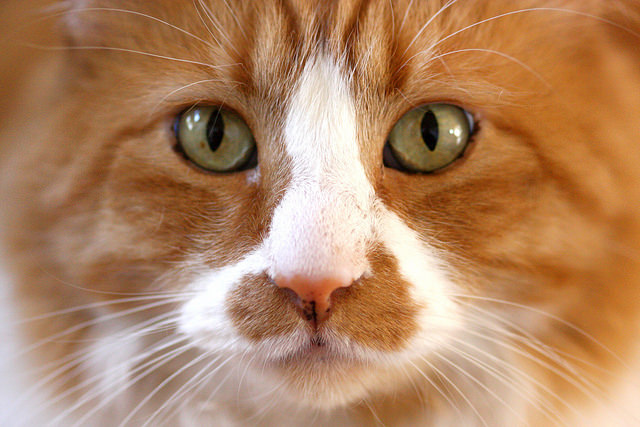Most people, especially when adopting from reputable shelters and rescue organizations, assume that their new furry family member has been thoroughly tested for the most common infections and diseases. According to Dr. Peter Kintzer, board certified internist and Field Medical Specialist at IDEXX (a company that provides diagnostic products and services to veterinarians), that assumption could put your cat in danger.

“It’s important to identify and establish a relationship with a veterinarian and take the cat in for a comprehensive examination and additional laboratory screening”, Kintzer says. This initial examination should include a complete blood count, a complete chemistry profile, and a urinalysis. “While it can identify problems that are hopefully treatable,” Kintzer explains, it also serves to establish baseline results. In establishing baseline results over a few years while the cat is younger, it gives us the ability to more accurately detect subtle changes in their blood work over time.” A red blood cell count, calcium levels, and liver enzymes are just a few of the things that’ll be analyzed. Healthy levels can vary in a population of cats, which is why there is an established range, but in an individual cat the range is a lot tighter. “An increase or decrease from the baseline may still be within the population’s normal range, but it won’t be normal for that cat.” That’s why establishing a history of blood work to reference is important, even when the results come back normal.
In addition to establishing a relationship with a veterinarian and starting to create a baseline for your cat’s health, there are four different illnesses that Dr. Kintzer believes are crucial to test for right away: feline immunodeficiency virus (FIV), feline leukemia virus (FeLV), heartworm disease, and kidney disease.

FIV and FeLV
FeLV is very easily contagious and should absolutely be ruled out before introducing a new cat to your home. While FIV is much harder to transmit, it can be passed through deep bites and should be ruled out if any cat in your household has a history or potential for aggression. “Even in a single-cat household,” Kintzer says, “testing is still recommended to give us information on the health status os the cat. Are there things we need to do going forward? Many of these cats can live a long time with these infections if they’re managed effectively.”

Heartworm
“The true prevalence of heartworm in cats is underestimated,” Kintzer says, “One study done at a university several years back on heartworm infected cats shows that about 25% [of the infected cats included in the study] were classified by their owners as indoor-only cats. It’s a big number, and it tells us that they’re not necessarily protected by indoor lifestyles.” Indoor cats can be at risk for heartworm if they sneak out of the house or if they come in contact with an infected mosquito in your home. According to Kintzer, “Even one or two mosquito bites has the potential for transmitting the disease. 3 out of 4 cats exposed to heartworm will become infected.”
Dr. Kintzer stresses that once your cat has been tested for heartworms, it’s critical to start your cat on a preventative medication. “Some studies show that heartworm preventatives are dispensed to cats less than 15% of the time. They’re tested but not put on a preventative. The preventative is very effective at preventing the heartworm infection from occurring; it’s a very effective medication. Most experts, including the American Heartworm Society, feel [preventative medications] are underutilized in cats.” Heartworm medications are available from your veterinarian in both oral and topical formulations.

Kidney disease
“Chronic kidney disease”, Kintzer explains, is a deterioration of the kidneys to a point where it becomes irreversible.” Kidney disease is most often seen in senior cats, but the disease or warning signs can be seen in younger cats as well. Younger cats may experience certain forms of congenital kidney disease, which can eventually lead to chronic kidney disease and kidney failure.
“It behooves us to identify [kidney disease] when we can because sometimes there are underlying causes that may be treatable. We may need to manage the cat and try to improve their quality of life or extend their life span.” If your cat has kidney disease, or warning signs that make her vulnerable, your veterinarian may recommend placing your cat on a special renal therapy diet.
As you can see, no matter how old or young your cat is, her history, or what sorts of tests have been previously performed by the adoption organization, a timely visit with your own veterinarian is a critical part of keeping your cat happy and healthy as she settles into her new home.
